Situational awareness: saving the lives of car crews
The ballistic threats, mines and roadside bombs that Western troops encountered during their recent operations in Iraq and Afghanistan led to the adoption of machines and weapon systems that allow personnel to remain safe inside the armored capsule. On the one hand, this guarantees better protection, and on the other, it worsens the situational awareness (the quality of the complex perception of heterogeneous information in a single space-time volume) of the crew. Something similar was already experienced by soldiers from motorized infantry units.
The need to maintain or improve the level of situational awareness becomes even more important as the number of tasks performed in urban environments increases, where infantry need to understand the situation before the ramp or stern doors are opened. In this regard, many companies have developed optical-electronic systems that allow crews to obtain the maximum amount of visual information while being protected by armor. Other sensory components may also be added, such as shot detection systems, which not only warn personnel that their vehicle is under the gun, but also inform them of the direction and distance from which the shot occurred. Basically, situational awareness systems are trying to give the crews what they could see and hear if they kept their heads out of the car, with the added advantage that advanced sensors can give.
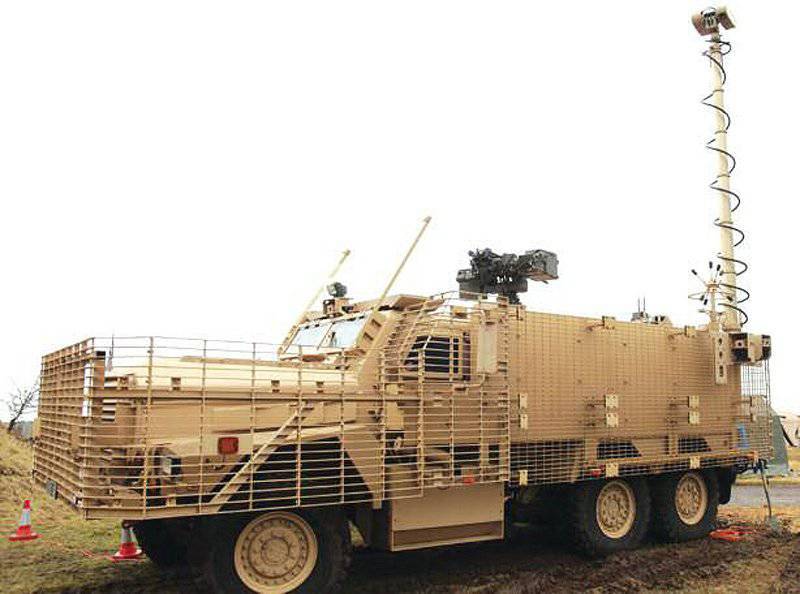
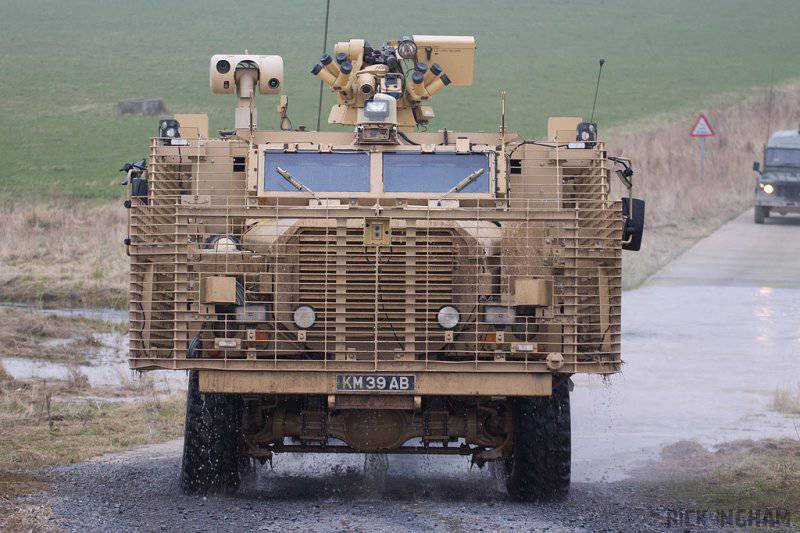
The British Army Mastiff, equipped with the Selex Galileo Road Marshall system. The company delivered over 1200 systems to the British Ministry of Defense
Optoelectronic systems at 360 °
The circular view is the first parameter of a good vehicle review system, which itself depends on the network, which collects data and sends it to the processor, which in turn provides an image to the crew members' screens. Most of the ubiquitous decisions are based on a multitude of sensors placed around the car or around the chassis if the car has a turret. 360 ° single all-round sensors are also available on the market, they can be cheaper and easier to install. The problem is that quite often the elements of the machine block the view, while single-touch systems do not have redundancy.
Selex Galileo has developed an integrated situational awareness kit for a vehicle called Road Marshall, which includes a family of hardware ranging from near-field awareness in the environment to RSTA (recconnaissance, surveillance and target acquisition) intelligence. The system is based on a multifunctional display, which is not only a display, but also provides power to all connected systems and provides communication.
The standard model has a 10,4-inch display with a resolution of 1024x768 pixels, although the option with an integrated computer with Windows XP is also available for third-party applications. These displays have Picture in Picture mode, which is not available for smaller 8,4 inch crew displays. All sensors are connected to a single quick-change unit. For short-range surveillance applications, Selex Galileo uses its Driver Night Vision System modules, which are an uncooled thermal imager with a 52 ° x 38 ° field of view operating in the 8 - 12 micron range. They can be supplemented with day / night cameras with a field of view of 90 ° x 75 ° and sensitivity from 0,009 to 100 lux. The configurations can vary: from the driver's seat with one heat chamber and one screen to a system with a full circular 360 ° coating; This system is capable of handling up to 16 cameras. Each screen is independent, the soldiers can call the desired image from one of the cameras. The company delivered over 1200 systems to the British Ministry of Defense. All Mastiff protected vehicles are equipped with a 360 ° overview system and have three screens: at the driver, commander and landing party.
At DSEI 2013, Selex Galileo presented its new dual-channel digital thermal / color camera DNVS-4 with two fields of view, respectively 52 ° x 39 ° and 62 ° x 46,5 °. The output signal is in color video format (either Def Stan 00-82 or GigE Vision). A window cleaning module may be added to the camera. It is available either as a high-performance color day / night camera or as a monochrome low-light camera. While the previous analog version is currently in service in Australasia, Europe and the Middle East, including Saudi Arabia, where it is installed on the BMP, an order from an unnamed European NATO member has already been received for the newest digital version. The Selex Galileo Road Marshall system was integrated with sound detection tools for firing positions: Britain chose Raytheon BBN Boomerang III, and other customers chose the O1dB Metravib Pilar system.
Over the past few years, Thales UK has supplied the UK with 100 analog situational awareness systems, but a fully digital SI system was introduced at the beginning of 2011. Known as ILSA (Integrated Local Situational Awareness), the system includes a digital network with an open architecture, as well as optical-electronic sensors and displays. However, the system can accept any sensor or display that is compatible with the new British design standards Def Stan 00-82 Digital Video Distribution and Def Stan 23-09 Generic Vehicle Architecture (GVA). The first contract was immediately obtained from Force Protection Europe, under which Thales UK is responsible for the entire Foxhound electronic architecture (armored vehicle under the Ocelot trademark, chosen as part of the British requirements for a light protected patrol car).
Thus, at the start of 2011, about 200 systems were ordered. ILSA guarantees a minimum delay and consists of two types of sensors, thermal cameras VEM-2 (W) and color / monochrome cameras, both small in size and weighing less than 2,5 kg. Thermal cameras run in the 8 - 12 micron range, have a horizontal field of view of 40 °, 50 ° and 90 ° and are based on a detector with a matrix of 640 x 480 pixels. The cameras have a horizontal field of view 78 ° or 96 ° and can operate in low light mode up to 0,1 lux with 480 resolution lines in color mode and 600 lines in monochrome mode, the sensor ensures human recognition in 100 meters. The images are sent to the central node, which distributes them to various displays “on demand”, thus allowing the driver, commander and gunner and the landing party to see the corresponding images on their screens. The ILSA system can accept other types of digital and analog sensors, for example, existing sights, remotely controlled combat modules, and acoustic detection systems, although the company has not yet been asked to integrate them. ILSA was also selected for Scout SV, so the system is supplied to General Dynamics UK for the demonstration phase, after which it will be manufactured from 400 to 600 machines. The configuration of the kit resembles the configuration adopted for the Foxhound machine. Sensors are mounted around the chassis, one of the two landing screens is located on the aft bulkhead so that the soldiers have a clear view of the situation behind the vehicle. Thales UK is ready to incorporate new features into its ILSA, such as automatic target detection.
She situational awareness system SAS (Situational Awareness System) from Rheinmetall has 360 ° coverage and in its basic configuration includes two modules, each consisting of three 60 ° cameras (that is, the total 180 °) and a video processing unit. The system can be adapted for all types of combat vehicles and expands to 4 modules (day and infrared optics). Single images from modules are stitched together in a processing unit to a virtual panoramic image on 360 °. The observer can select any area from the panoramic view by simply touching the monitor. In the same way, you can select the view from the four windows; they are all shown at the top of the monitor. The enhanced version provides swap functionality to support counter-attack measures. It is also possible to apply an automatic target recognition and tracking system; The intended targets within the viewed video stream are determined and automatically tracked, their data is retrieved and cyclically reported. The SAS system is mass-produced; it was installed in the Lance tower, supplied by Rheinmetall in the Spanish Marines. She also passes tests on various chassis around the world.
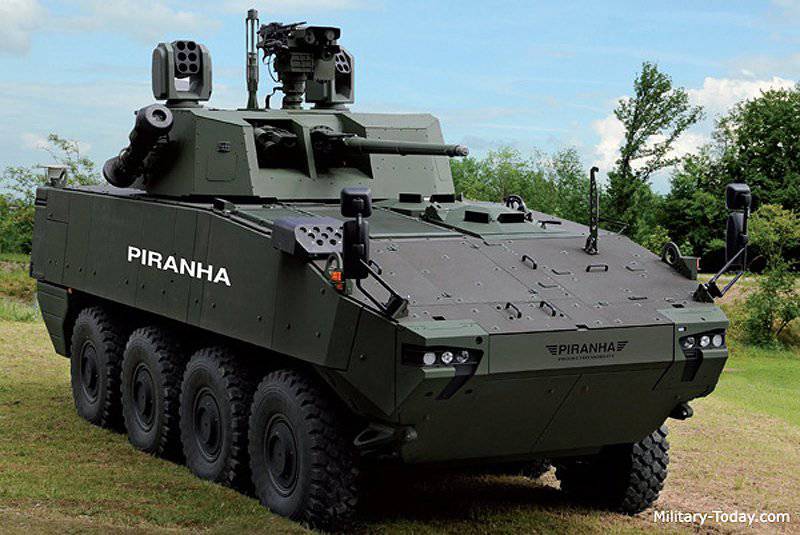
The first order for the Rheinmetall SAS system was an order for the Spanish marines, where the system is integrated into the Lance tower installed on Piranha machines
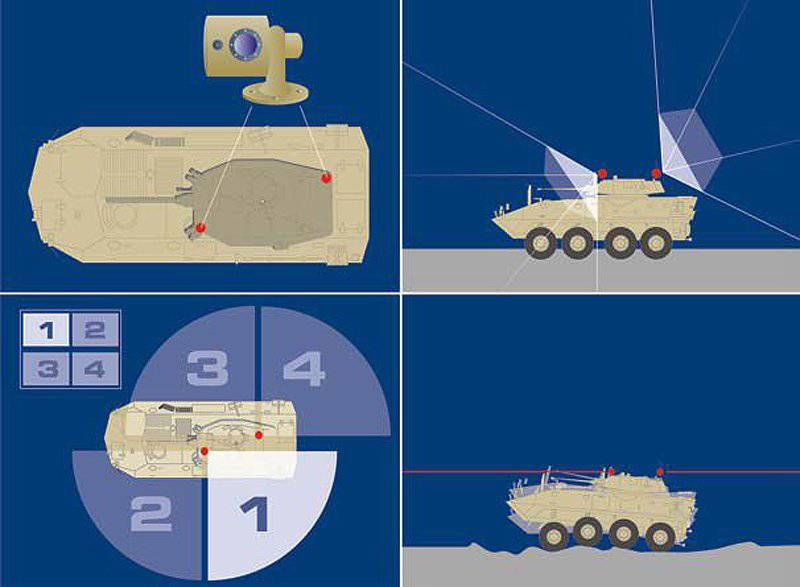
Zeiss Mini Sight application scheme for medium armored vehicle
The STA system (See-Through Armor) from the Israeli company Elbit Systems provides a seamless 360 ° view of the external environment of the machine and allows you to enlarge selected areas of the image. The system can support high-resolution day / night sensors from 4 to 12, providing vertical angles of -20 ° / + 30 °. Day sensors come in the form of Gigabit Ethernet standard cameras (common name for data transfer technologies in a local network with 1 Gbps speed), available with different resolutions (640 x 480, 782 x 582 or 720 x 1280). Thermal imagers based on uncooled bolometric sensors with 384 x 288 or 640 x 480 resolution are available for night conditions. Updating the day and night channels is usually estimated at 25 frames per second with a two-frame delay, although maximum 100 frames / s are achievable with day sensors. Captured images are processed by STA algorithms, which allows you to combine them into a single panoramic image 360 °. Then the image is available on up to three screens, where the operator sees the front panoramic view, selects the area of interest, which he can enlarge while leaving, for example, the upper part of the screen for the rear panoramic view in order to maintain full awareness. An STA can be integrated with other sensors, such as combat control systems, warning systems, and fire control systems.
Carl Zeiss Optronics recently developed a small, stabilized Mini Sight System (MSS) platform that can accept an uncooled thermal imager and / or CCD camera, as well as an optional laser range finder. For MSS, height 250 mm and diameter 180 mm; The azimuth optics rotates 360 °, and the elevation angle is from -30 ° to + 80 °. The two-axis stabilization ensures that the target remains in the MSS field of view, the maximum angular velocity is 1,8 rad / s, whereas the stabilization error is less than 300 millrad. MSS is distinguished by motion detection algorithms, which reduces the load on the crew, especially in urban environments. On the BMP, two to three MSS are installed to cover 360 °. The mass and size of the system allows you to install the system on light armored vehicles of all types.
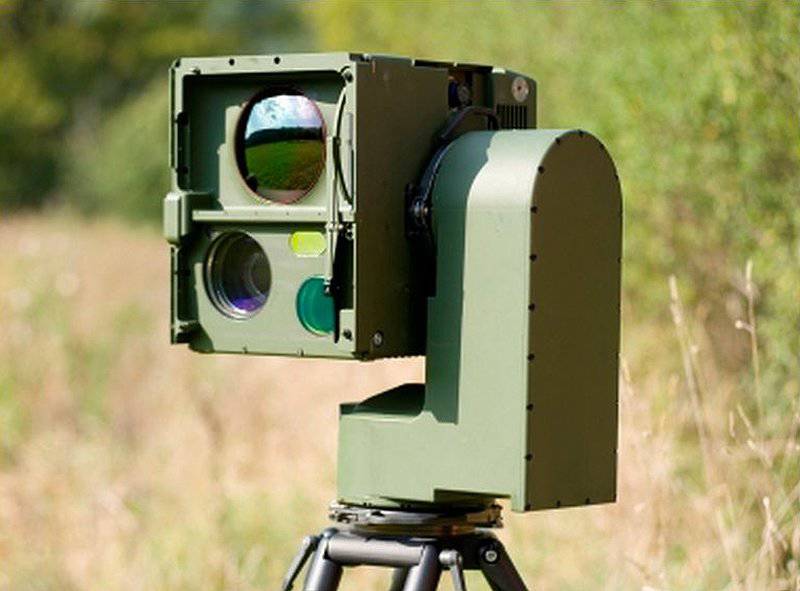
Developed by Carl Zeiss Optronics, the MiniSight is a stabilized platform that can accept various types of sensors.
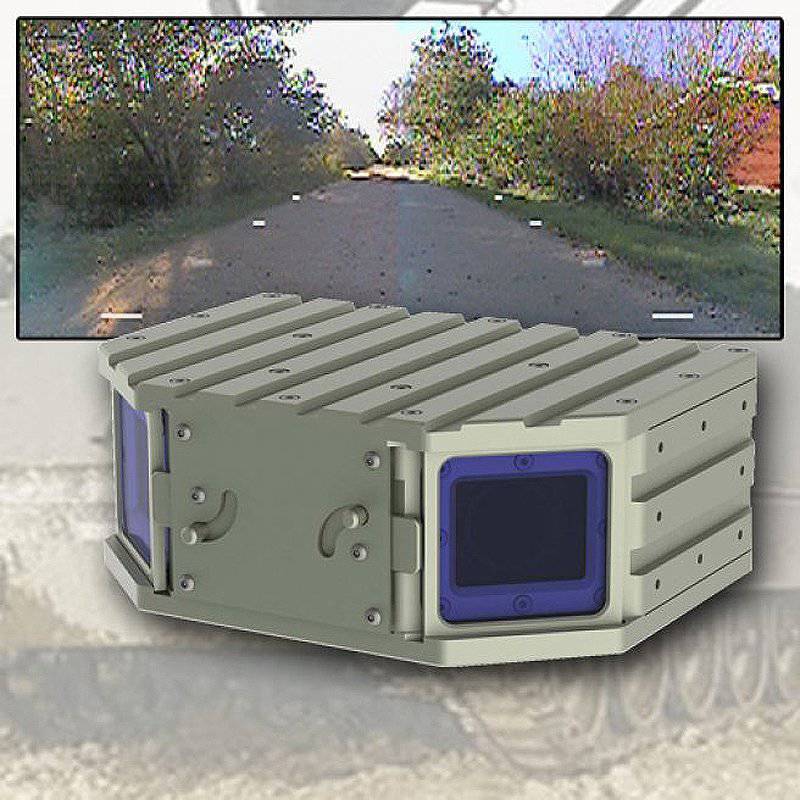
The panoramic version of the CST “Citadel” camera family includes two cameras that give a single field of view 170 °
Copenhagen Sensor Technology (CST) is developing a complete family of situational awareness cameras to be shown at Eurosatory 2012. They are known as Citadel and are specifically designed for installation on military platforms: from light armored and reconnaissance vehicles to tanks. They are designed so that they have virtually no image delay; they can be used as an aid to the driver, providing him with an expanded front and rear view, as well as a circular view for the commander and the landing. Based on the latest generation of color CCD cameras, this high-resolution system gives you a clear picture in different conditions, from bright sunlight to low-light scenes thanks to the extended night mode. Fully hardened and low profile these cameras can operate in the temperature range from -40 ° C to + 70 ° C. The Citadel camera system comes in two basic configurations. The panoramic configuration consists of two cameras in strong metal cases. These cameras form two streams of video data that are “stitched” together into one video stream with a horizontal field of view of 170 °. The wide-angle configuration uses one wide-angle field of view with factory adjustment of the horizontal field of view from 47 ° to 112 ° depending on the specific model. Coordination is performed through a connector type MIL 38999, which allows for a simple connection with on-board video processors and monitors. These cameras can be easily integrated into retrofitted systems, and for the digital world of newly developed machines, CST offers Citadel camera models with a Gigabit Ethernet digital interface that provides high-speed video streams in accordance with either the GigE Vision standard or Def.Stan 00-82 standard. The company works closely with major European manufacturers of military vehicles and system integrators; several field trials are planned or ongoing.
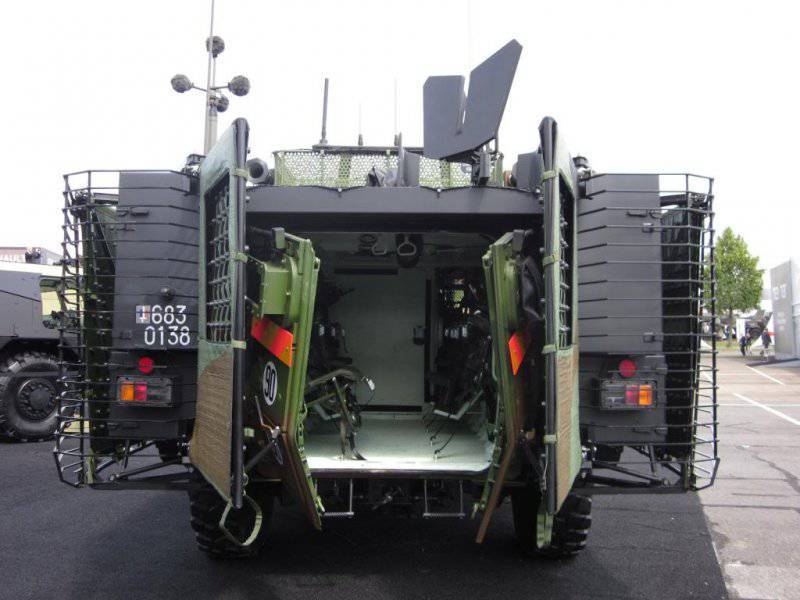
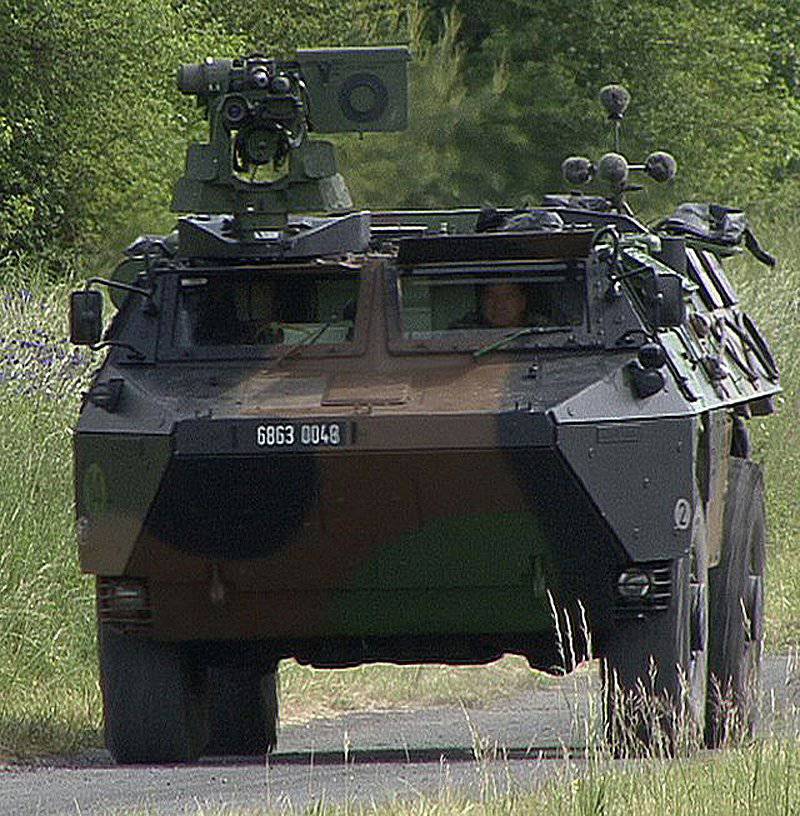
The latest success of the O1dB Metraviv Pilar speaker system took place on the upgraded machines 4x4 VAB TOP of the French contingent in Afghanistan
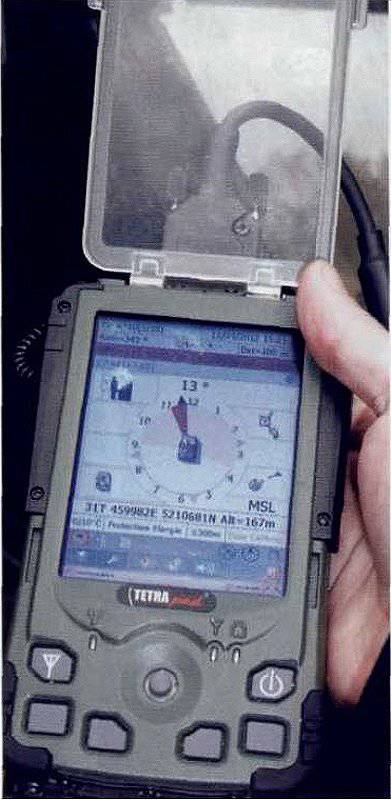
The 01dB Metravib Pilar manual display shows the sector from which the threat emanates.
Acoustic systems for determining the shot
While most of these systems are based on acoustic sensors, one of the newest developments is based on completely different principles, on infrared focal plane technology. Known as Flash (Fast as Light Assessment of Snipers and Hostile fire), the system is produced by Hawaiian company Oceanit. An infrared sensor is a microcircuit that operates at a frequency of more than 10000 frames per second, can “see” a shot when a bullet leaves the barrel and can report at a frequency of 1 / 10 seconds the location of the shot and the type of weapons, recognizing rifle, RPG, etc. Flash is a circular camera with a fisheye lens. According to Oceanit, the Flash system has a detection range of over a kilometer with a detection probability of more than 99% and a false response rate of less than 0,1%. These characteristics are obtained by using algorithms that allow us to distinguish a flash from an instrument and a flash reflected from a shiny surface. Flash technology is used to develop the HFDS (Hostile Fire Detection System) for the US Army, which can be installed on vehicles and helicopters. Unfortunately, very little information has been given on this development.
Raytheon BBN Technologies Boomerang III is undoubtedly one of the most widely used acoustic detection systems. At different levels deployed over 10000 such systems. The last contract from the US Army was issued in October 2011 of the year and includes both new systems and spare parts. It operates at speeds up to 95 km / h and guarantees detection over 95% of supersonic projectiles passing within a radius of 30 meters from the microphone mast. The accuracy in azimuth and elevation is more than 2,5 °, and the error in range is ± 10%, the results are shown for one and a half seconds. BBN does not disclose its customers, but the UK, at least, is one of them, the system is integrated into situational awareness systems installed on most of the machines in Afghanistan.
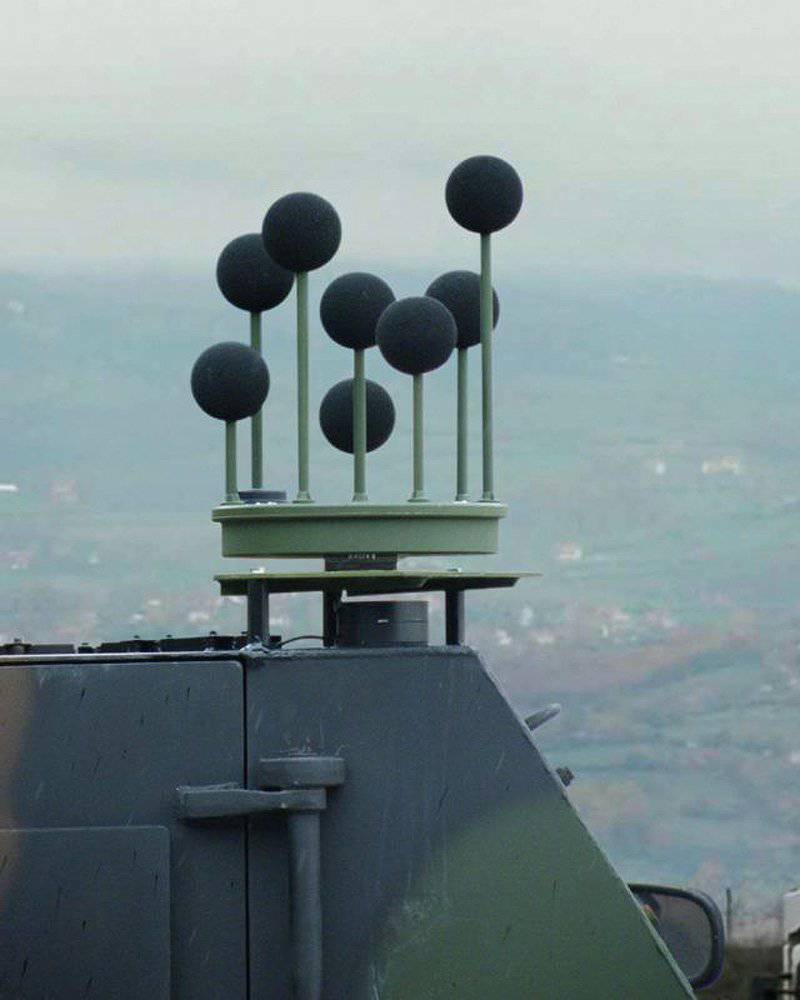
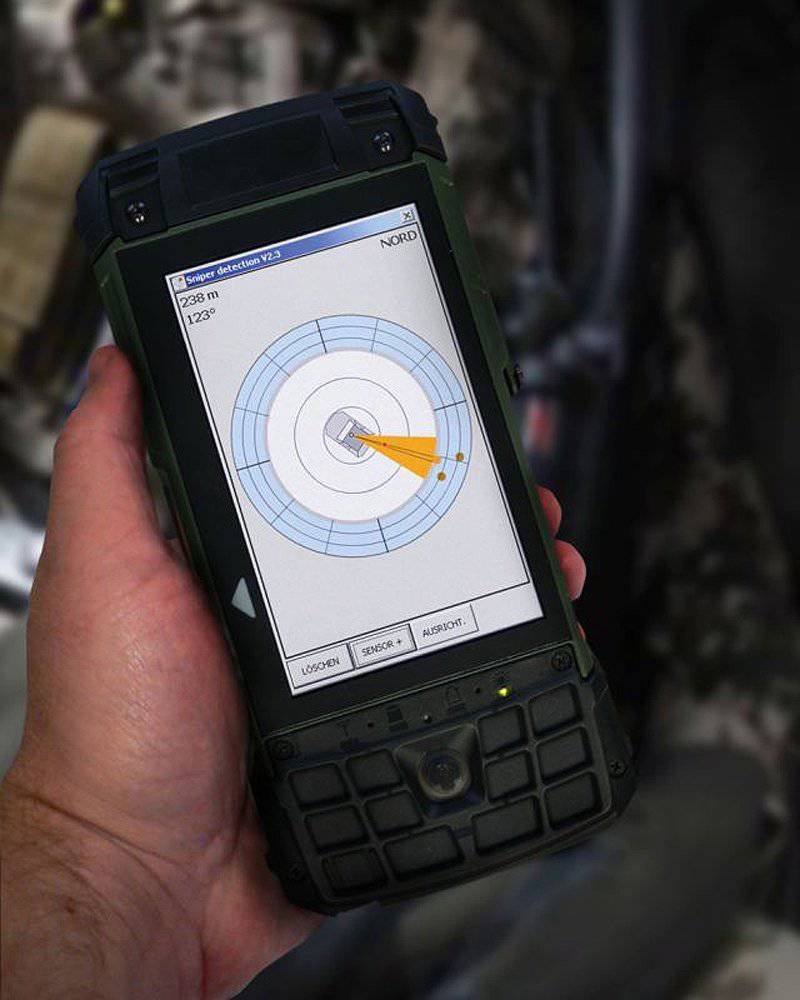
Rheinmetall’s sniper detection system has gone through the entire development phase and is now ready for mass production.
Another well-known system is Pilar Mk-IIw from the French company 01dB Metravib, more than 1000 of these systems were sold to 20 countries in various configurations. Two types are available: a separate system and integrated with the combat module. The system is able to detect any 5,56 - 20 mm ammunition, single or shot out, with or without a silencer, as well as an RPG or mortar shell. The reaction time is two seconds, the accuracy in azimuth is ± 2 ° when the vehicle is stationary and ± 5 ° in motion, the accuracy in elevation ± 5 °. The accuracy of determining the distance varies from ± 10% to ± 20%, the detection range is about 1500 m. The system consists of a set of microphones, an interface and a data acquisition module, a filter for determining offensive fire, a display unit (usually a computer with increased reliability) running on the software securing shotguard, and patch cables. The man-machine interface includes two modes: offensive fire in an urban area and all types of shots in an open area. In the integrated version, Pilar Mk-IIw can direct the combat module directly to a detected threat or can provide data on the location of the threat to the battle management system, which allows the transfer of information about the threat along the command chain. This decision was taken by Norway and Singapore. Among the most recent contracts, 01dB Metravib received an order for 80 kits under the Slate designation for the French army for installation on VAB 4x4 vehicles equipped with a Kongsberg M151 Protector combat module. The systems are fully integrated, the tower turns either instantly or with a delay in order to occupy a more advantageous tactical position with the machine. The systems were delivered at the end of 2011, and were immediately sent to Afghanistan.
Rheinmetall Defense has also developed an acoustic sensor for ASLS (Acoustic Sniper Locating System) vehicles, consisting of eight microphones and a computer system that provides automatic detection with an angular accuracy of less than 2 ° in the parking lot and 5 ° in motion. Range accuracy is ± 10%, and the maximum range by 20% exceeds the range of the weapon firing at the vehicle. The built-in orientation sensor provides compensation for the movement of the machine, allowing you to keep the direction on the shooting relative to the direction on the display. The system also provides vertical angles (all data is updated every one and a half second), and the coverage angles are in azimuth 360 ° and in elevation 180 °. Wireless data transmission between the sensor, control unit and display ensures seamless system installation. In addition, when operating as a separate solution, the ASLS can be interfaced with the SAS system from Rheinmetall, as well as with a remotely controlled combat module for its automatic rotation in the direction of the threat. The system is ready for production, prototypes are available that are installed on various machines and towers that are being tested in tenders around the world.
Thales UK’s Vmass (Vehicle Mounted Acoustic Sensor System) speaker system provides 360 ° coverage using three microphones installed at different points in the car and allows you to simultaneously track multiple sources. The accuracy of the system in azimuth is less than 2 ° and in the vertical direction less than 4 °. Its detection range of small arms is equal to the actual range of the weapon itself. The Vmass system is capable of detecting mortar fire at ranges over 5 km, the main battle tank over 10 km and a helicopter over 7 km.
Materials used:
Armada International 3 / 2013
www.rheinmetall-defence.com
www.selexgalileo.com
www.cassidian.com
www.01db-metravib.com
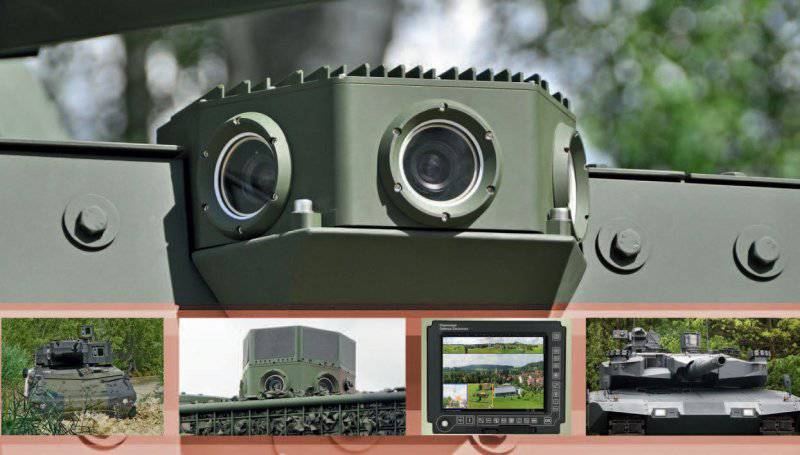
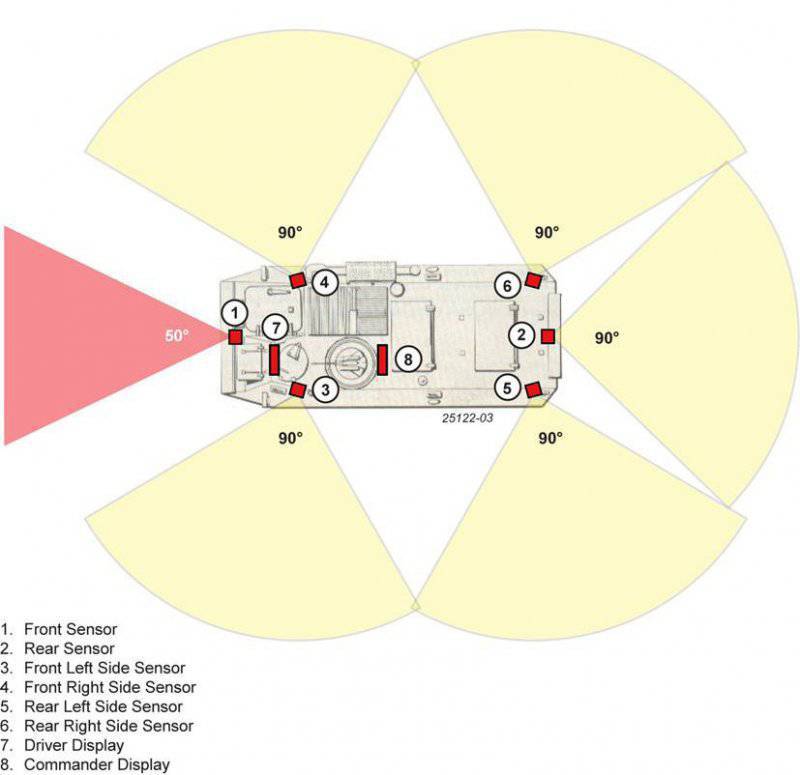
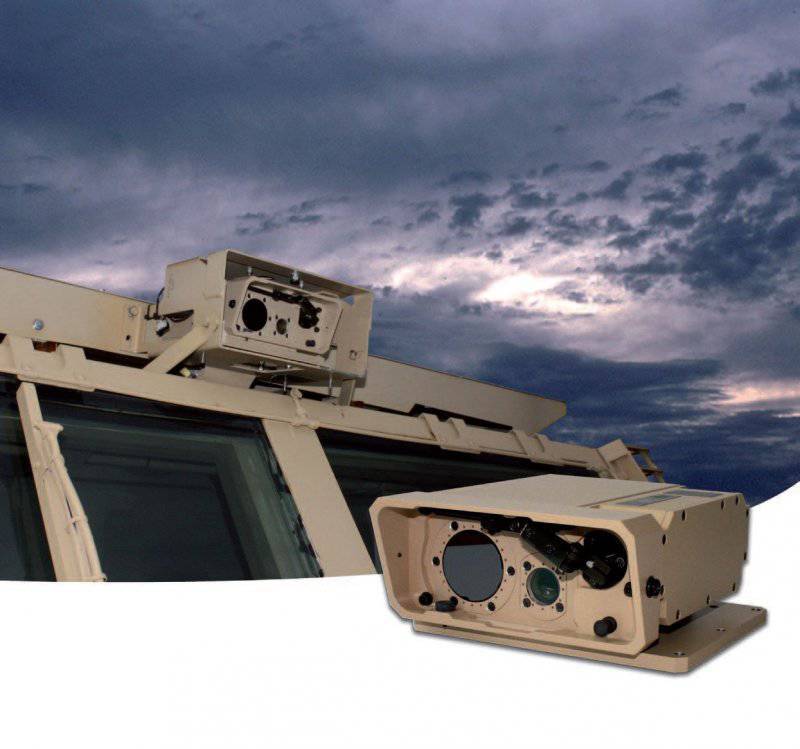
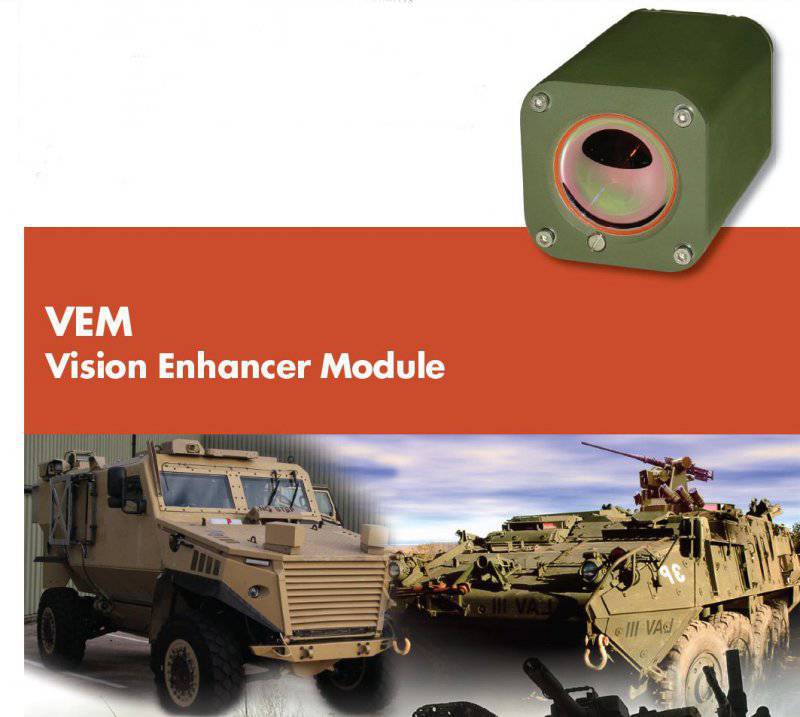
Information